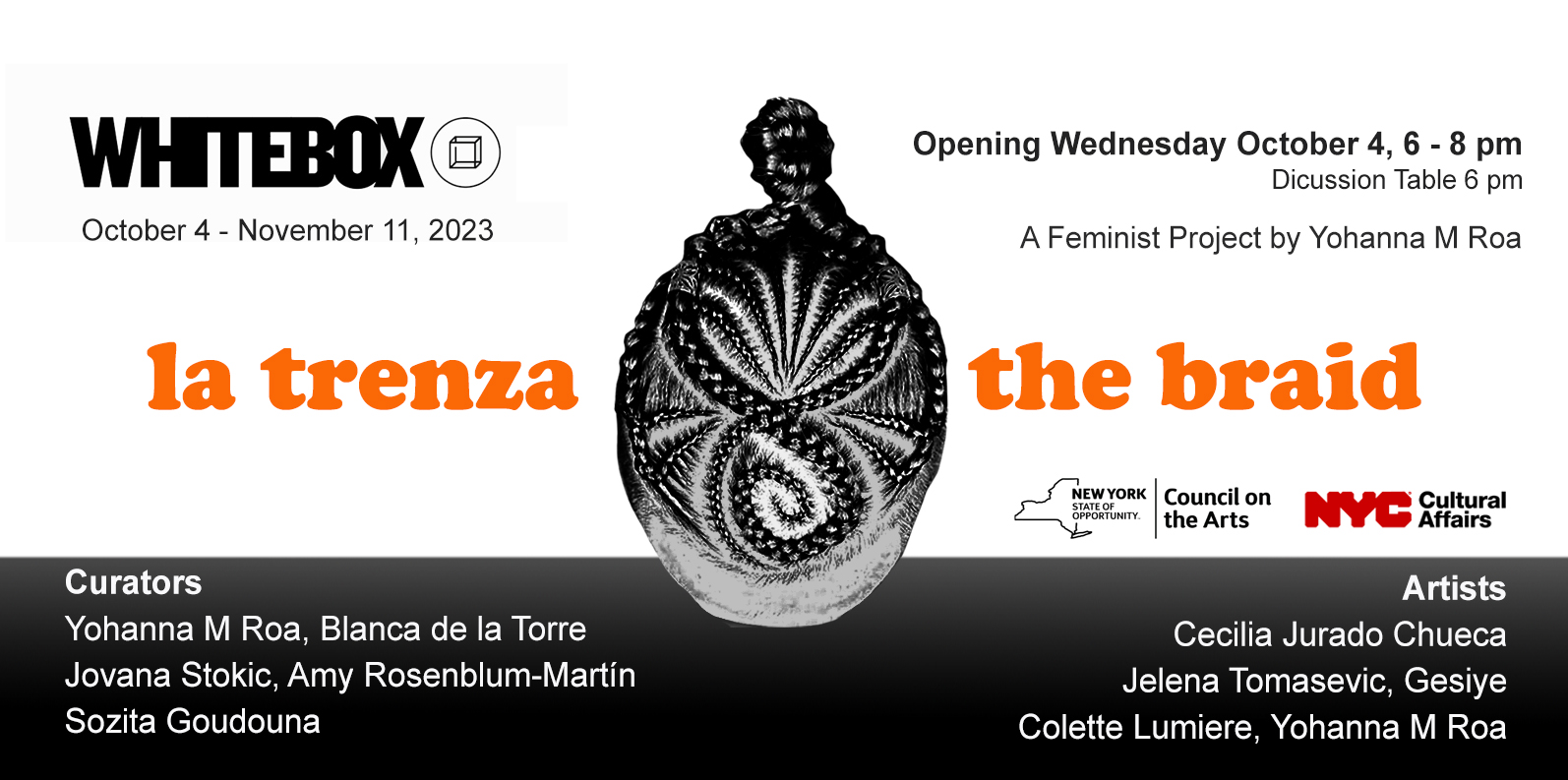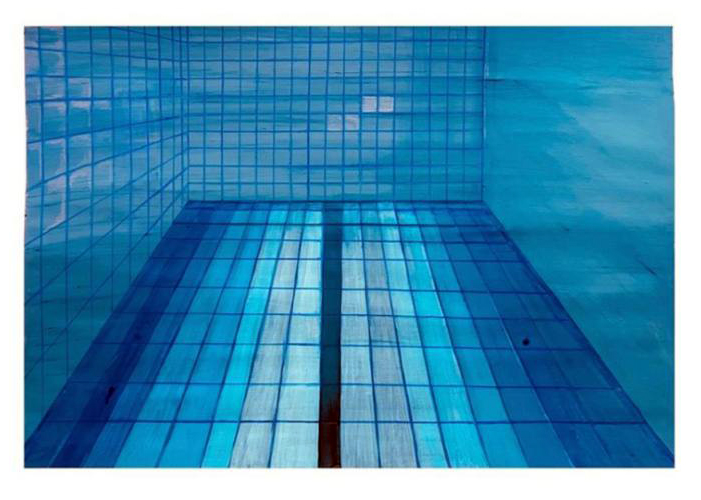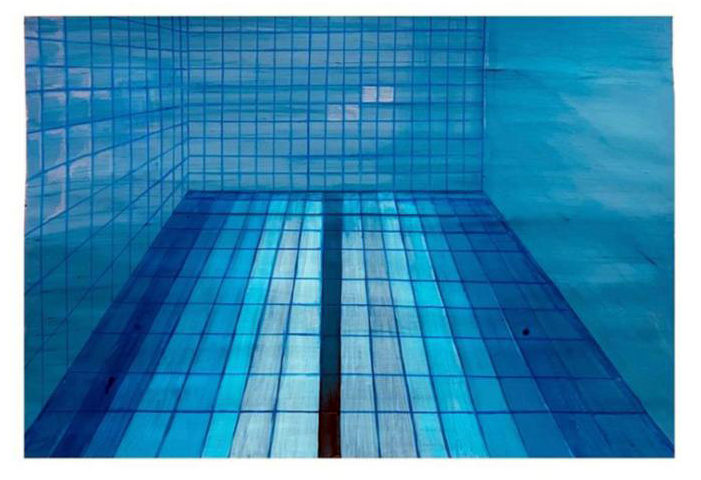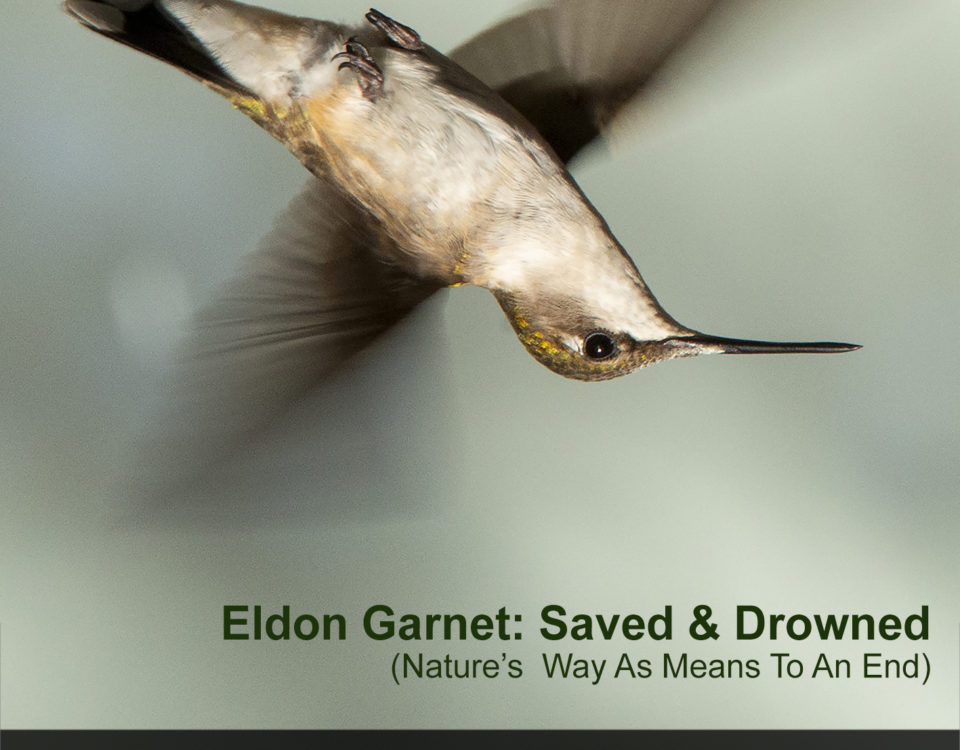
la trenza – the braid
September 26, 2023
la trenza – the braid. Jelena Tomasevic, Artist & Jovana Stokic, curator
September 26, 2023
This is the heading

Cecilia Jurado Chueca
Mermaids in the Basement Installation - Watercolors, Cly Dim: Variables
C.J. Chueca
From the series Mermaids in the Basement
By Blanca de La Torre, curator
The first mermaids were half bird, half woman and the first written source where they appear is in Homer's Odyssey, where Ulysses and his crew manage to avoid the attraction of their songs. The "mermaids," protagonists of Chueca's work, are women who sing stories that have to do with longing, Some of the songs come from popular orality, accounting for the recovery of ancestral cosmovision and knowledge. The title of the series, taken from a poem by Emily Dickinson, also suggests a displacement from a natural place, like the sea or any of our own ecosystems, to an urban environment.
Each work is titled under a poem related to water. All Day I Hear the Noise of Waters, which leads us to James Joyce, is the sound work that is central to the whole series. In it, women from different geographies, sing stories that have to do with dispossession and lost land. The idea of a singing siren – reinforced by the idea of a bird-woman who sings and travels – is also fused here with the underwater version typical of the collective imagery.
The Water Understands, from a verse by Waldo Emerson is a sculpture consisting of two flip-flops resting on a pool ladder.The connection with water appears as the main ingredient of the ceramic technique with which they have been made, but they also refer to the abandoned footwear of the refugees, and once again connects the natural space with the urban and the artificiality of the pool that is evoked.
The canvas that bathes the wall bring us back to Dickinson: Water, is Taught by Thirst, and dialogues with the group of paintings Pools. In all of them there are ceramic tiles, a constant in the work of C.J. Chueca, paying homage to the dispossessed, marginalized and excluded. The grids allude as well to the New York City subway tiles and the ancient Greek mosaics, as well as Portuguese and Spanish ones. The artist appeals to the imagery from the colonial heritage of the Abya Yala territories (Latin America) that leads to a review of the role of colonialism in water extractivisms and the concept of climate debt to countries of the Global South.
With all of the works, Chueca, an active swimmer whose personal experience is also imprint here, continues her ongoing investigations around water, connects us with hydrofeminist ideas and transports us to a water space of methafors built with narratives of repair, resilience, and transformation.



